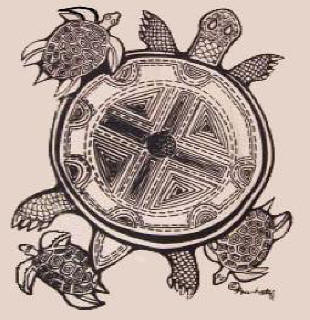 |
LITR 4231 Early American
Literature Research Posts 2014 (research post assignment) Research Post 1 |
 |
Cohen P Landry
26 March 2014
Indian Christian Conversions: Majestic or Manipulation
After reading and studying early western American civilization and
explorations, I became intrigued with the European-Indian religious
interactions. What is known and well stated throughout history is the
condescending attitude and bigotry showed by the Easterners towards the Indians;
however, what is not clearly documented is how the assimilated Indians adopted
the new ways of religious culture, and created a cross-cultural religious
system. My intention in doing this research is to identify a specific reason or
cause for the Indian tribes to convert to an alien way of life. More
specifically, I focused on northeastern tribes and how they set the standard of
how and why they associated with European cultures that ultimately shifted the
Indian religious and psychological perspective.
The psychological and spiritual transformation of the Oneida and Iroquois Indian
tribes throughout the early exploration periods has been historically
misinterpreted as a cordial “reciprocated culture exchange”
Recent historical evidence shows that extreme social disorganization and chaos
caused Indians to accept and “seek out such [new] innovations”
Along with the idea to “gain political favor with the colonizers,”
Some Indians resisted the pressure to convert and assimilate due to their
“tribal, family, and mythic structures be[ing] undermined”
After further research and readings, I have discovered that many Indian tribes
truly possess the spiritual welfare that the Judeo-Christian theology embodies.
The practice of forgiveness, acts of longsuffering,
with all
humility and gentleness, with patience, bearing with one another in love.
The respect and unity they have for nature and the divine creation is
remarkable. Could it have been that the Protestants and other eastern travelers
saw God in the Indians that they may have seen in themselves, or did their
intricate plan of confusion, manipulation, and deprivation torment the innocent
people of the western world?
Works Cited
Heise, David R. "Prefatory Findings in the Sociology of Missions." Journal for the Scientific Study of Religion (1967): 49-58. Web. <http://coursesite.uhcl.edu/HSH/Whitec/>.
James, Ronda P. "We are Well As We Are: An Indian critique of seventeenth-Century Christian Missions." William and Mary Quarterly 34 (1977): 66-82. Web. <http://coursesite.uhcl.edu/HSH/Whitec/>.
Mandell, Daniel R. "Turned Their Minds to Religion." Early American Studies (2013): 211-242. Web.
Morrison, Kenneth M. "That Art of Coyning Christians: John Eliot and the Praying Indians of Massachusetts." Ethnohistory 21.1 (1974): 77-92. Web. <http://coursesite.uhcl.edu/HSH/Whitec/>.
Salisbury, Neal. "Manitou and Providence: Indians, Europeans, and the making of
New England." Journal for the Scientific Study of Religion (1967): 49-58.
Web. <http://coursesite.uhcl.edu/HSH/Whitec/>.
|
|
|
|


